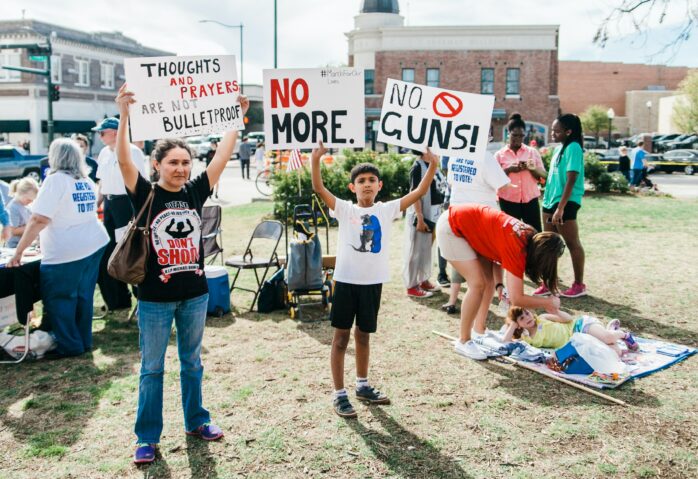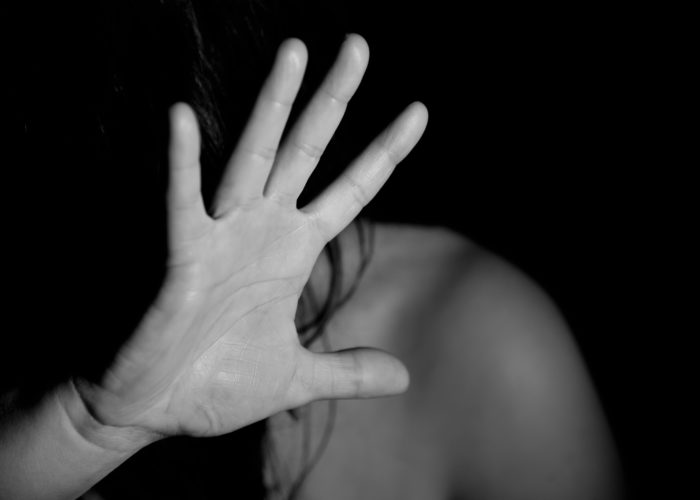This collection of research on U.S. school shootings, originally published in February 2018 and updated in December 2021, has been updated again with new data and research on how these violent events affect student achievement and campus enrollment.
Ten people died and another 13 have been injured in U.S. school shootings so far this year, Education Week’s 2023 School Shooting Tracker shows.
On March 27, three 9-year-olds and three adult staff members were killed at The Covenant School in Nashville, Tennessee. It’s the deadliest school shooting since May 2022, when an 18-year-old former student gunned down 19 children and two teachers at Robb Elementary School in Uvalde, Texas.
As journalists rush to collect facts, they try to put these events into context, focusing, for example, on questions about gun policies and how the communities involved are grappling with their loss.
Long after news crews leave, though, those who witnessed these tragedies will bear their consequences. Extensive research suggests that exposure to violence can hurt children’s health and well-being for years into the future. It also can desensitize them — violence, in their eyes, becomes an acceptable way to handle problems, researchers explain.
Below, we’ve pulled together research that looks at other consequences that might seem less obvious to reporters covering school shootings. These studies offer insights into how student academic performance and enrollment can fall following a mass shooting on campus.
Toward the bottom of this piece, you’ll find other resources we think you’ll find helpful, including a guide on interviewing children from the national Education Writers Association and an explainer on firearm technology and vocabulary from Columbia University’s Dart Center for Journalism & Trauma.
__________
The Effects of Campus Shootings on School Finance and Student Composition
Lang “Kate” Yang and Maithreyi Gopalan. Education Finance and Policy, March 2023.
This paper, based on an analysis of shootings at U.S. public schools between 1999 and 2018, provides “the first causal estimates of campus shootings on [school] district finance, staffing, and student composition on a national scale,” the researchers write.
The main takeaways:
- School shootings were associated with increased spending — an additional $248 per student, on average. Schools spent this money primarily on capital projects such as building repairs and security upgrades and on student support services such as mental health and psychological services.
- The federal government paid for most of these new costs. “While campus shootings are localized events, the costs are shared by all taxpayers as federal transfers provide the main source of funding increases.”
- Enrollment dropped after a school shooting as higher-income families left the area. “The exiting effect is not confined to the public school system either,” Yang and Gopalan write. “After shootings occur on public school campuses, enrollments drop among private schools located within the public school district boundary.”
- The average number of teachers per 100 students did not change after shootings, confirming prior research indicating “shootings do not lead to a crowd-out of instructional resources.” The number of guidance counselors rose temporarily, during the first year or two after a shooting.
Trauma at School: The Impacts of Shootings on Students’ Human Capital and Economic Outcomes
Marika Cabral, Bokyung Kim, Maya Rossin-Slater, Molly Schnell and Hannes Schwandt. National Bureau of Economic Research working paper, revised May 2022.
Researchers studied public school shootings in Texas to gauge their impact on students’ education and future job earnings. They focus on the 33 shootings that took place on school grounds during school hours between 1995 and 2016.
The analysis reveals:
- Children who attended public schools where a shooting occurred were, on average, 1.8 percentage points more likely to be chronically absent than kids at similar schools that had no shootings. Students exposed to school shootings were 1.3 percentage points more likely to repeat a grade, on average.
- Students who were sophomores or juniors when a shooting occurred at their high school were 2.9 percentage points less likely to graduate high school when compared with students in the same grades who attended similar schools without shootings. They were 5.5 percentage points less likely to enroll in a four-year college, on average.
- Students exposed to a school shooting in grades 9, 10 or 11 were 4.4 percentage points less likely to have jobs when they reached the age of 24 to 26, and their lifetime earnings were projected to be lower. “Our estimates imply a $115,550 reduction (in 2018 dollars) in the present discounted value of lifetime earnings per shooting-exposed student,” the researchers write.
Exposure to a School Shooting and Subsequent Well-Being
Phillip B. Levine and Robin McKnight. National Bureau of Economic Research working paper, December 2020.
Student test scores fell and chronic absenteeism rose, especially among boys, at public elementary schools across Newtown, Connecticut, after a massacre at Sandy Hook Elementary School in 2012, according to this analysis.
The researchers examined student test scores at 14 elementary and middle schools in the U.S. that experienced fatal shootings between 2009 and 2016. One person died in each of those shootings, except for at Sandy Hook Elementary, where 20 first-graders and 6 educators were killed. The researchers also looked at changes in chronic absenteeism, or the proportion of children who missed more than 10% of school days in a given academic year.
What Levine and McKnight learned: As a whole, the 14 public schools did not see changes in test scores or absentee rates for boys or girls. But when they looked specifically at the scores of third- and fourth-graders in Newtown, Connecticut, between 2008 and 2018, they found that student performance dropped across elementary schools after the shooting at Sandy Hook Elementary.
“At Sandy Hook, test results fell dramatically after the shooting,” they write. “Results rebounded somewhat over time as the affected cohorts aged out of the school. At other Newtown elementary schools, these data suggest that test scores fell as well, suggesting a broad impact within the district.”
Chronic absenteeism spiked.
“Chronic absenteeism at Sandy Hook Elementary more than doubled in the year after the shooting,” the researchers write. “It also increased at other elementary schools in the district, although to a lesser extent.”
The Relationships Between Violence in Childhood and Educational Outcomes: A Global Systematic Review and Meta-analysis
Deborah Fry, Xiangming Fang, Stuart Elliott, Tabitha Casey, Xiaodong Zheng, Jiaoyuan Li, Lani Florian and Gillean McCluskey. Child Abuse & Neglect, January 2018.
This research article examines dozens of studies from 21 countries to understand the relationship between different types of violence in childhood and a range of education-related outcomes such as academic performance, absenteeism and graduation and dropout rates. The study finds that all types of childhood violence have an impact. For example, children who experience physical violence are 20% less likely to graduate. Children who experience any type of violence are less likely to earn high grades and test scores.
The Effect of Community Traumatic Events on Student Achievement: Evidence from the Beltway Sniper Attacks
Seth Gershenson and Erdal Tekin. Education Finance and Policy, May 2017.
This study looks at how traumatic events such as mass shootings affect the performance of students living in the community where the events occurred. Gershenson and Tekin focused specifically on how elementary school students in Virginia performed on standardized tests after the “Beltway Sniper” attacks of 2002. “The main results indicate that the attacks significantly reduced school-level proficiency rates in schools within five miles of an attack. Evidence of a causal effect is most robust for math proficiency rates in the third and fifth grades, and third grade reading proficiency, suggesting that the shootings caused a decline in school proficiency rates of about 2% to 5%. Particularly concerning from an equity standpoint, these effects appear to be entirely driven by achievement declines in schools that serve higher proportions of racial minority and socioeconomically disadvantaged students.”
The Effect of High School Shootings on Schools and Student Performance
Louis-Philippe Beland and Dongwoo Kim. Educational Evaluation and Policy Analysis, March 2016.
This study suggests that high schools where fatal shootings have occurred experience a 5.8% drop in freshmen enrollment, on average, following the event. The researchers also examined standardized test scores in California and found that scores in math and English declined for students who remain enrolled after the shooting. Beland and Kim did not find statistically significant impacts on graduation or suspension rates or student attendance.
School Shootings and Private School Enrollment
Rahi Abouk and Scott Adams. Economics Letters, February 2013.
This study finds that school shootings increase enrollment at private high schools, particularly in suburban and rural areas. Abouk and Adams looked at enrollment at public and private high schools nationwide between 1998 and 2009 and matched that data with school shooting reports. Private school enrollments increased an estimated 9.7% to 11.6% in the academic year immediately following a shooting. Meanwhile, public school enrollment fell an estimated 0.4% to 1.3%. “Parents overestimate the potential for such events to be repeated, particularly those that occur in suburban and rural areas, because of intense media coverage,” the authors write.
Other resources:
- The U.S. Centers for Disease Control and Prevention’s WONDER database provides data on causes of death by age, year and census region. In 2020, firearm-related injuries became the leading cause of death among youth aged 1 to 19 years.
- Our tip sheet, “Trauma-Informed Journalism: What It Is, Why It’s Important and Tips for Practicing It,” offers guidance on interviewing individuals who have experienced trauma and helping them tell their stories.
- The Education Writers Association created a tip sheet on covering school shootings and a guide on interviewing children.
- Another one of our tip sheets, “7 Things Journalists Should Know About Guns,” briefs journalists on basic terminology and warns them about some of the pitfalls of covering gun issues.
- Columbia University’s Dart Center for Journalism & Trauma offers a range of resources for covering mass shootings, including an explainer on firearm technology and vocabulary.
This article first appeared on The Journalist’s Resource and is republished here under a Creative Commons license.![]()





